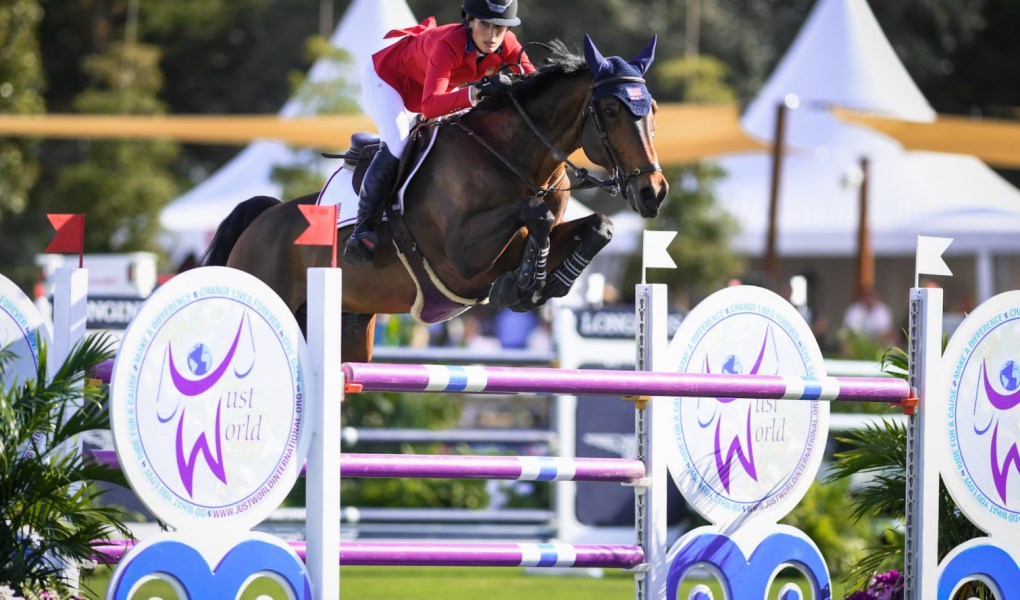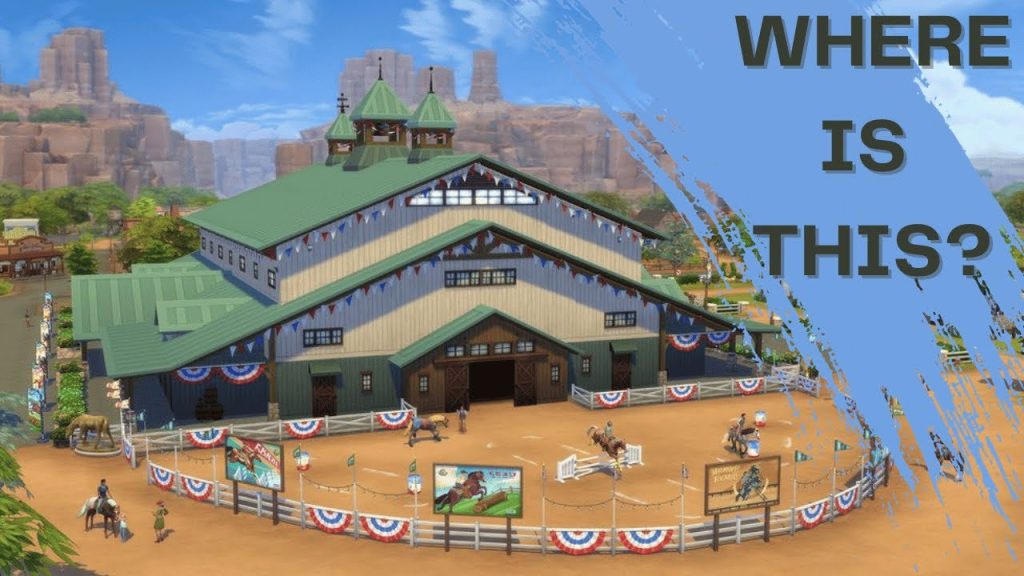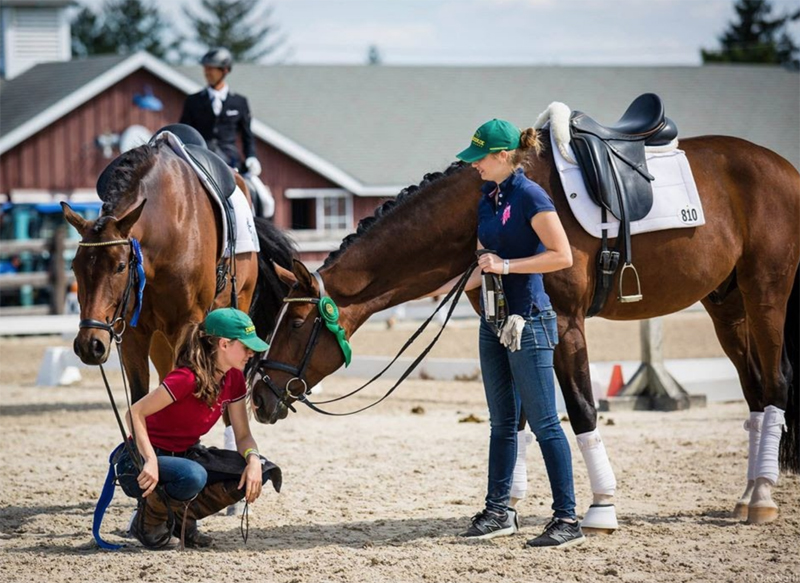Becoming an Olympic equestrian rider is a dream for many horse enthusiasts. It requires dedication, skill, and a deep bond with your horse.
To achieve this goal, you need to understand the journey ahead. Olympic equestrian riders train for years, mastering various riding disciplines. They build strong relationships with their horses, focusing on trust and communication. Success in equestrian sports also involves competing in local and international events, gaining experience and recognition.
Physical fitness, mental resilience, and continuous learning are key aspects of this journey. This blog post will guide you through the essential steps to become an Olympic equestrian rider, helping you turn your passion into an extraordinary achievement. Read on to discover the path to the Olympic arena.
Introduction To Olympic Equestrian Riding
Olympic Equestrian Riding is a thrilling and prestigious sport. It combines the skill of the rider with the grace of the horse. This unique partnership creates an exciting and challenging competition. Aspiring riders need dedication, training, and a deep love for horses.
History Of Equestrian Sports
Equestrian sports have ancient roots. They date back to the early civilizations. Ancient Greeks and Romans used horses for chariot races and cavalry. Over centuries, these activities evolved into organized sports.
In 1900, Equestrian sports made their debut at the Paris Olympics. Initially, they included jumping events. By 1912, dressage and eventing were added to the program. These disciplines continue to be part of the modern Olympic Games.
| Year | Event |
|---|---|
| 1900 | Jumping |
| 1912 | Dressage, Eventing |
Importance Of Equestrian In The Olympics
Equestrian sports hold a special place in the Olympics. They are one of the few sports where men and women compete on equal terms. This makes the events unique and inspiring.
The sport promotes a strong bond between horse and rider. It showcases discipline, precision, and harmony. Each event tests different skills, from speed in jumping to grace in dressage.
- Jumping: Tests speed and agility.
- Dressage: Displays grace and precision.
- Eventing: Combines jumping, dressage, and cross-country.
Becoming an Olympic Equestrian Rider is a rewarding journey. It requires years of practice and a deep connection with your horse. The path is challenging but the rewards are immense.

Credit: www.usatoday.com
Essential Skills For Equestrian Riders
Becoming an Olympic equestrian rider requires more than passion. Mastering essential skills is crucial for success. These skills range from basic riding techniques to advanced riding skills. Let’s explore the key skills every aspiring Olympic equestrian rider must develop.
Basic Riding Techniques
Understanding the basic riding techniques is the first step. Here are some essential techniques:
- Mounting and Dismounting: Learn to get on and off the horse safely.
- Proper Posture: Maintain a balanced and upright position.
- Rein Control: Use the reins to guide the horse effectively.
- Basic Commands: Master commands like walk, trot, and stop.
Advanced Riding Skills
After mastering the basics, advancing your riding skills is necessary. Key advanced skills include:
- Dressage: Perform precise movements with the horse.
- Jumping: Train the horse to jump over obstacles.
- Cross-Country Riding: Navigate varied terrains and obstacles.
- Horse Training: Develop a deep understanding of horse behavior.
Both basic and advanced skills are vital for an Olympic equestrian rider. Practice consistently and seek feedback to improve.
Choosing The Right Horse
Choosing the right horse is crucial in your journey to becoming an Olympic equestrian rider. A good horse can make a significant difference in your training and performance. It’s not just about finding a horse you like; it’s about finding a horse that fits your needs and goals.
Selecting A Suitable Horse
When selecting a suitable horse, consider its age, temperament, and experience. An older, experienced horse might be perfect for beginners as they are usually calmer and more predictable. On the other hand, a younger horse might be more suitable for advanced riders looking for a challenge.
Consider the horse’s health and physical condition. A healthy horse with good conformation and no health issues will perform better and have a longer career.
| Criteria | Ideal Characteristics |
|---|---|
| Age | 8-12 years for beginners, 5-8 years for advanced riders |
| Temperament | Calm and gentle for beginners, lively and energetic for advanced riders |
| Experience | Trained and experienced in competitions |
| Health | Good overall health, no chronic issues |
Understanding Horse Breeds
Different horse breeds have different strengths and characteristics. Understanding these can help you choose the right horse.
Warmbloods are popular in dressage and show jumping. They are athletic, versatile, and have a good temperament. Thoroughbreds are known for their speed and agility, making them ideal for eventing and racing. Arabians are known for their endurance and are often used in long-distance riding events.
Each breed has unique qualities. Here is a quick reference:
- Warmbloods: Athletic, versatile, good temperament
- Thoroughbreds: Speed, agility
- Arabians: Endurance, stamina
Choose a breed that aligns with your specific goals in equestrian sports.

Credit: www.usatoday.com
Training Regimen For Equestrians
Becoming an Olympic equestrian rider requires dedication and discipline. The training regimen is intense and structured. Each part of the routine plays a crucial role in developing the skills needed for competition.
Daily Training Routine
A daily training routine helps build consistency and skill. Riders must spend several hours with their horses each day. This includes riding, grooming, and bonding activities.
Riding sessions typically last for two to three hours. During these sessions, riders practice different techniques and movements. These include dressage, jumping, and cross-country.
- Dressage: Focuses on precision and control.
- Jumping: Improves agility and coordination.
- Cross-country: Enhances endurance and adaptability.
After riding, horses need proper care. Grooming, feeding, and checking for injuries are essential. These tasks help maintain the horse’s health and performance.
| Activity | Duration |
|---|---|
| Riding | 2-3 hours |
| Grooming | 30 minutes |
| Feeding | 15 minutes |
Strength And Conditioning Exercises
Equestrian riders need to be physically fit. Strength and conditioning exercises are crucial. These exercises improve balance, core strength, and overall fitness.
Core exercises are vital. They help maintain balance while riding. Planks, sit-ups, and leg raises are effective.
- Planks: Hold for 30 seconds to 1 minute.
- Sit-ups: Perform 20-30 repetitions.
- Leg raises: Do 15-20 repetitions.
Strength training helps build muscle. Squats, lunges, and deadlifts are beneficial. These exercises should be done with proper form to prevent injury.
- Squats: Do 3 sets of 12-15 repetitions.
- Lunges: Perform 3 sets of 10-12 repetitions.
- Deadlifts: Complete 3 sets of 8-10 repetitions.
Cardio workouts enhance endurance. Running, cycling, and swimming are excellent choices. Aim for at least 30 minutes of cardio, three times a week.
Proper rest and recovery are also important. Ensure adequate sleep and take rest days to prevent burnout.
Nutrition And Diet
Nutrition and diet play a crucial role in becoming an Olympic equestrian rider. Both the rider and the horse need proper nourishment to perform at their best. Ensuring a balanced diet can enhance energy levels, focus, and overall performance.
Dietary Needs For Riders
Olympic equestrian riders need a well-rounded diet. Consuming a variety of fruits, vegetables, lean proteins, and whole grains is essential. These foods provide the necessary vitamins and minerals. Staying hydrated is equally important. Drinking plenty of water helps maintain energy levels and keeps the body functioning properly.
Riders should avoid processed foods and sugary drinks. These can lead to energy crashes and poor performance. Planning meals ahead of time can help maintain a balanced diet. Keeping healthy snacks on hand, like nuts or fruit, can also be beneficial.
Feeding Your Horse
Proper nutrition is also critical for your horse. A balanced diet ensures your horse remains strong and healthy. High-quality hay or pasture should make up the bulk of your horse’s diet. This provides essential fiber and nutrients.
Grains and concentrates can be added for extra energy. However, they should be given in moderation. Providing fresh, clean water at all times is crucial. Horses need ample water to stay hydrated and perform well.
Supplements can be useful for meeting specific dietary needs. Consult with a vet to determine the best nutrition plan for your horse. Regularly check your horse’s weight and adjust their diet as needed.

Credit: novabarnmom.com
Mental Preparation
Becoming an Olympic equestrian rider requires more than physical skill. Mental preparation is crucial. You need confidence and must handle competition anxiety well. Both are key to success in the arena.
Building Confidence
Confidence is the foundation of any Olympic athlete’s success. Start by setting small, achievable goals. Each goal you reach builds your confidence. Keep a journal of your progress. This helps you see how far you’ve come.
Visualize your success. Picture yourself riding perfectly. Imagine the sound of the crowd cheering. Visualization can boost your confidence. Practice positive self-talk. Replace negative thoughts with positive ones. Tell yourself, “I can do this.”
| Confidence Building Tips | Explanation |
|---|---|
| Set Small Goals | Achieve each goal to build confidence. |
| Keep a Journal | Track your progress to see improvement. |
| Visualization | Imagine success to boost confidence. |
| Positive Self-Talk | Replace negative thoughts with positive ones. |
Overcoming Competition Anxiety
Competition anxiety can affect performance. Learn to manage it. Start by practicing deep breathing. Deep breaths calm your mind and body. Create a pre-competition routine. Familiar routines reduce anxiety.
Focus on the present. Don’t think about past mistakes. Stay in the moment. Use relaxation techniques. Yoga and meditation can help. Talk to a sports psychologist. They can teach you anxiety management techniques.
- Practice deep breathing.
- Create a pre-competition routine.
- Focus on the present moment.
- Use relaxation techniques.
- Consult a sports psychologist.
Remember, mental preparation is as important as physical training. Build your confidence. Manage your anxiety. You can become an Olympic equestrian rider.
Competing In Equestrian Events
To become an Olympic equestrian rider, you must first understand the competitions. Competing in equestrian events requires skill, knowledge, and dedication. This section will guide you through the types of events and the rules and regulations you need to know.
Types Of Equestrian Events
In the Olympics, equestrian events are divided into three main categories:
- Dressage: This event showcases the horse’s training and the rider’s skill. The horse performs a series of predetermined movements known as “tests.”
- Show Jumping: Riders must guide their horses over a series of obstacles. The goal is to complete the course with the fewest penalties.
- Eventing: This is a combination of dressage, cross-country, and show jumping. It tests the horse and rider’s versatility and endurance.
Rules And Regulations
Each equestrian event has its own set of rules and regulations. Here are some key points:
| Event | Key Rules |
|---|---|
| Dressage |
|
| Show Jumping |
|
| Eventing |
|
Understanding these events and their rules is crucial. It helps you prepare and compete effectively. Keep practicing and learning to improve your chances of success in the Olympic equestrian events.
Path To The Olympics
Becoming an Olympic equestrian rider requires dedication, skill, and a clear path. This journey is filled with intense training, competition, and perseverance. Understanding the steps to qualify and the importance of a coach can make this dream achievable.
Qualifying For The Olympics
To qualify for the Olympics, riders must meet specific criteria. This often includes competing in international events and earning a certain number of points. Here are the key steps:
- Participate in recognized competitions: Riders must compete in events sanctioned by the FEI (Fédération Equestre Internationale).
- Earn qualifying points: Perform well to accumulate points needed for Olympic qualification.
- Meet national team requirements: Each country has its own selection criteria, which may include trials and rankings.
Qualifying is a rigorous process, but with determination, it is possible.
Training With A Coach
Training with a coach is vital for success. A coach provides guidance, feedback, and support. Here are some benefits:
- Personalized training plans: Coaches tailor programs to suit the rider’s strengths and weaknesses.
- Technical expertise: Coaches help improve riding techniques and strategies.
- Mental preparation: Coaches assist with the mental aspects of competition, such as focus and confidence.
Finding the right coach can make a significant difference. They help you reach your full potential and achieve your Olympic dreams.
Maintaining Horse Health
Maintaining horse health is crucial for any Olympic equestrian rider. A healthy horse ensures peak performance and a strong bond between rider and animal. Proper care involves regular check-ups and preventive measures. Let’s dive into the essentials.
Routine Veterinary Care
Regular vet visits are a must for an Olympic-level horse. Schedule check-ups at least twice a year. These visits help catch health issues early. Your vet will check teeth, hooves, and overall health.
Vaccinations are also vital. They protect your horse from diseases. Common vaccines include tetanus, influenza, and rabies. Follow your vet’s advice on vaccination schedules.
Dental care is another key aspect. Horses need their teeth floated annually. This process smooths out sharp edges. It helps the horse chew food properly and prevents discomfort.
Preventing Common Injuries
Injuries can sideline even the best horses. Prevention is better than cure. Warm up your horse before every ride. This practice prepares muscles for work and reduces the risk of injury.
Check the horse’s hooves regularly. Clean them daily to remove debris. Look for cracks or signs of infection. Proper hoof care prevents lameness and other issues.
Provide your horse with appropriate footwear. Horseshoes protect the hooves and provide traction. Consult a farrier for the best shoeing plan.
Proper nutrition also plays a role in injury prevention. A balanced diet keeps your horse strong. Consult a nutritionist for a tailored feeding plan.
Financial Aspects
Becoming an Olympic equestrian rider requires dedication and skill. Yet, the financial aspects can be daunting. Understanding these costs is crucial for anyone aiming for the Olympics.
Costs Of Training And Competing
Training as an equestrian involves significant expenses. Riding lessons can cost anywhere from $50 to $100 per hour. Hiring a top-level coach might even cost more. Regular training sessions are essential, adding up quickly.
Then, there’s the cost of maintaining a horse. This includes feeding, stabling, and veterinary care. The annual cost can range between $5,000 to $15,000. Competing also involves entry fees, which vary by event. Travel expenses add another layer of cost. Transporting horses and riders to competitions can be expensive.
Sponsorship And Funding
Sponsorships can help cover some of these expenses. Riders often seek support from companies that sell equestrian products. These companies may provide financial aid or equipment.
Grants and scholarships are other funding options. Various organizations offer financial support to promising riders. Applying for these can help ease the financial burden.
Personal fundraising is also an option. Many riders use crowdfunding platforms to raise money. Sharing their journey and goals can inspire others to contribute.
Frequently Asked Questions
What Is The First Step To Become An Olympic Equestrian Rider?
The first step is to learn horseback riding basics. Find a certified instructor and practice regularly.
How Important Is A Trainer In Equestrian Sports?
A qualified trainer is crucial. They provide guidance, improve your skills, and help you progress efficiently.
How Much Time Does Training Take?
Training varies but typically requires several years of dedicated practice. Consistent effort and perseverance are key.
Do I Need My Own Horse To Compete?
Owning a horse is beneficial but not mandatory. You can lease or borrow a suitable horse for competitions.
Conclusion
Becoming an Olympic equestrian rider requires dedication and passion. Start with basic horse riding skills. Practice consistently and seek guidance from experienced trainers. Participate in local competitions to gain experience. Focus on building a strong bond with your horse. Maintain a healthy diet and exercise routine for both you and your horse.
Stay patient and persistent. Celebrate small victories along the way. Keep learning and improving. Remember, every step brings you closer to your dream. With hard work and commitment, you can achieve your goal. Keep riding and never give up.



